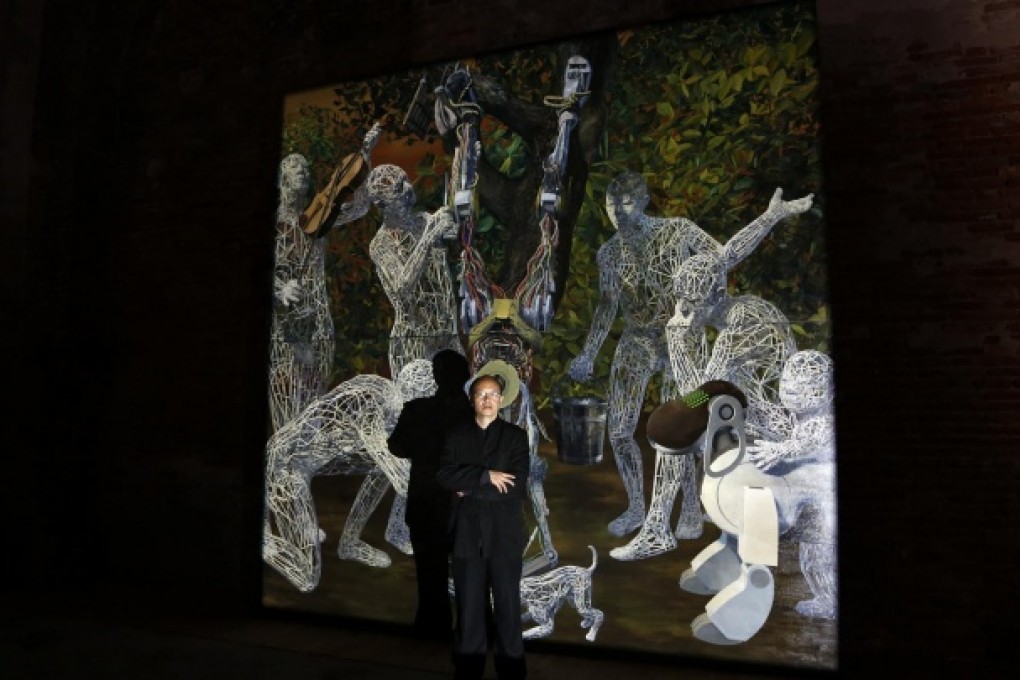Mainland artists make strong showing in Venice Biennale exhibition
Artists feature across Venice Biennale, focusing on cultural barriers, change and globalisation

China has a strong presence at this year's Venice Biennale art festival, with several artists featured in the main exhibition, national pavilions and side events.
Three Chinese artists, Kan Xuan , Lin Xue , and Guo Fengyi , are among 150 artists from 38 countries featured in the main international exhibition, The Encyclopedic Palace, curated by Massimiliano Gioni. Dissident-artist Ai Weiwei has one massive installation, Bang, made of 886 antique stools, in the German pavilion.
"Transfiguration" is the theme of this year's China pavilion in the Arsenale. Curated by Wang Chunchen , head of the curatorial research department at the Central Academy of Fine Arts' museum in Beijing, it features works by seven artists in various mediums. Wang said that while they were in conversation he hoped to show the world the development of Chinese contemporary art under accelerating modernisation.
"Chinese contemporary art development corresponds to the development of the country," Wang said, adding that "Chinese contemporary art is about contemplating social problems".
Artist Shu Yong , will make his Venice debut with his 20-metre-long, two-metre-tall Guge Wall, made from 1,500 resin " guge bricks", on the lawn outside the China pavilion. Each brick contains a piece of rice paper bearing handwritten Chinese statements and idioms Shu collected from various public platforms, accompanied by a fragmented English translation done by Google Translate. Google is referred to as "Guge" on the mainland.
Shu said he hoped his work could demonstrate the barrier between cultures while contemplating present Chinese society. He said the mainland had no direct access to Google and people had to scale the "great firewall" in order to read news on Google, and that signified one barrier between the mainland and the rest of the world.